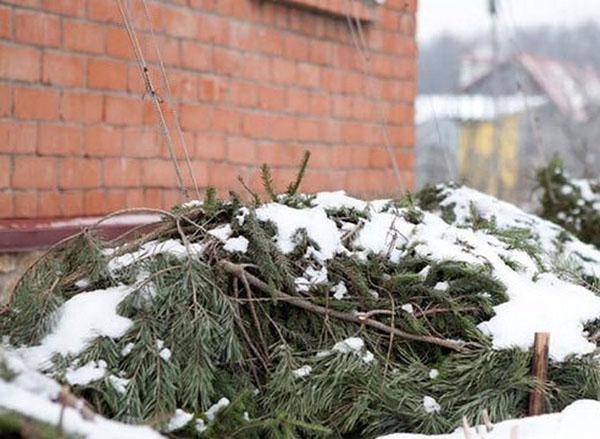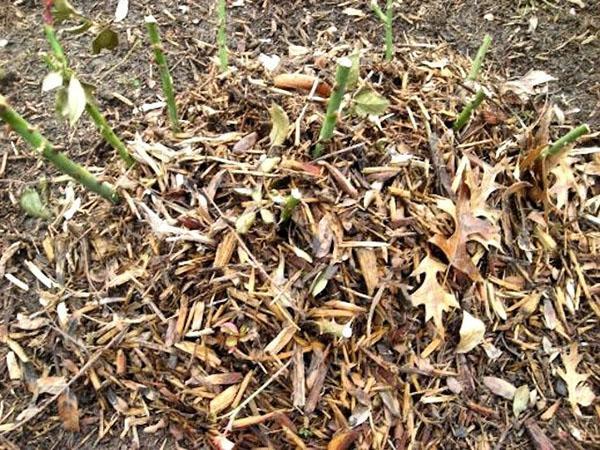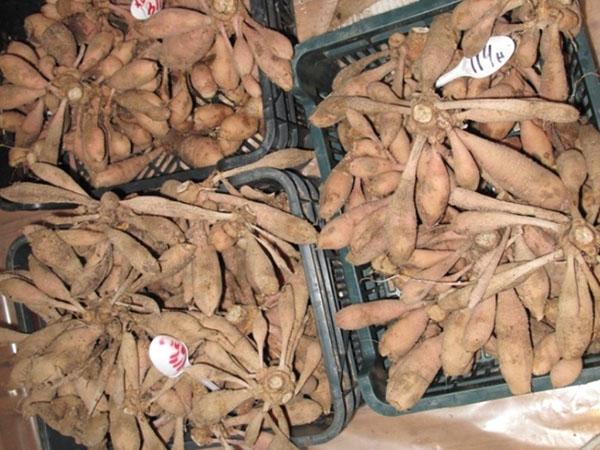Floral chores for the soul when January is outside the window
 When winter is in full swing and it's January, it might seem like it's time to take a break from earthwork. In fact, for a true lover of green plants, winter is not a hindrance. He still takes pleasure in the trouble of having fresh flowers.
When winter is in full swing and it's January, it might seem like it's time to take a break from earthwork. In fact, for a true lover of green plants, winter is not a hindrance. He still takes pleasure in the trouble of having fresh flowers.
Troubles with sleeping beds

In regions with milder winters, where it rains in January, and frosts are rare, but aptly, it is worth preparing additional shelter. For this, fallen leaves are used, from which a natural "blanket" is made. Due to the decay process, the temperature rises in the thickness of the leaves, which protects the rhizomes of perennials from the cold. Coniferous branches or earth mounds also serve as a wonderful shelter.
 January chores in the flower beds involve a thorough check of the tubers of your favorite flowers stored in the basement. It can be:
January chores in the flower beds involve a thorough check of the tubers of your favorite flowers stored in the basement. It can be:
 They should be free of visible damage, firm and juicy. Those that do not meet these requirements are best put aside. This check will help prepare for the spring planting of flowers in the flower beds and save valuable time.
They should be free of visible damage, firm and juicy. Those that do not meet these requirements are best put aside. This check will help prepare for the spring planting of flowers in the flower beds and save valuable time.
The optimum storage temperature for rhizomes of flower plants ranges from 6 to 8 degrees Celsius. Humidity should not exceed 80%.
Bulb flower forcing technology
 With the arrival of winter, the landscape on the street becomes monotonous: dull gray trees, cloudy skies and short days. In areas where there is a lot of snow, the ground puts on a white blanket, which you want to dilute with something. Therefore, true color lovers create real spring in their homes in January. To do this, they use bulbous plants:
With the arrival of winter, the landscape on the street becomes monotonous: dull gray trees, cloudy skies and short days. In areas where there is a lot of snow, the ground puts on a white blanket, which you want to dilute with something. Therefore, true color lovers create real spring in their homes in January. To do this, they use bulbous plants:
- crocuses;
- hyacinths;
- daffodils;
- tulips.
 Interestingly, these wonderful spring flowers can bloom even in winter. The main thing is to create suitable conditions for them. Forcing bulbous plants is a unique way to create a true garden of delight in your home.
Interestingly, these wonderful spring flowers can bloom even in winter. The main thing is to create suitable conditions for them. Forcing bulbous plants is a unique way to create a true garden of delight in your home.
To get flowers in full bloom in winter, you need to create an optimal temperature for the plant and wait for the allotted time.
Depending on when you want to see the blossoming flower buds, you should start distilling. On average, the entire process can take over 16 weeks.
But first, choose the right bulbs. They must meet the following characteristics:
They must meet the following characteristics:
- large sizes;
- without any damage;
- dense;
- heavyweight.
In addition, the plant varieties to be used should be considered.
 The next step is suitable containers. It is best to plant the bulbs in plastic pots or clay with holes for special drainage. Even not very pretty pots can be placed in a basket or decorated with something. The main requirement is that they must be higher than the planted bulb. If you need to plant a lot of bulbous flowers, use special racks or boxes.
The next step is suitable containers. It is best to plant the bulbs in plastic pots or clay with holes for special drainage. Even not very pretty pots can be placed in a basket or decorated with something. The main requirement is that they must be higher than the planted bulb. If you need to plant a lot of bulbous flowers, use special racks or boxes.
When the containers are ready, they are filled with fertile soil that was prepared in advance.A special drainage mixed with sand is poured at the bottom. Cover it with soil, pour water and spread the bulbs. For plants to develop successfully, they need regular watering with settled water and top dressing. After a very short time, original indoor flowers will appear in the house, which will remind you that spring is just around the corner.
For plants to develop successfully, they need regular watering with settled water and top dressing. After a very short time, original indoor flowers will appear in the house, which will remind you that spring is just around the corner.
Bulbs of such plants like a hyacinth or cyclamen must be planted just above the ground. Other plants should be deepened into the soil.
Procurement of planting material
 On cold winter evenings, when a blizzard is playing outside the window or the wind and rain are raging, real farmers are preparing for spring. They check their seed banks and plan to purchase fresh seeds. Just January is the most suitable month for this important business.
On cold winter evenings, when a blizzard is playing outside the window or the wind and rain are raging, real farmers are preparing for spring. They check their seed banks and plan to purchase fresh seeds. Just January is the most suitable month for this important business.
Some summer residents noticed that the product update takes place in November or December. Therefore, in the middle of winter, you can safely purchase vegetable seeds that retain their germination for a long time. In addition, during this period, it is advisable to purchase seeds of hybrids, which may be in short supply in the spring.
Since some plants have a long period of development, they are sown in boxes at the end of January. Purchasing seeds on time saves time. It is better to purchase planting material in special outlets that have an excellent reputation. It is important to remember to check the expiration date so as not to be disappointed after sowing.
 The seeds of cold-resistant plants are suitable for residents of Siberian regions. And vegetables should be chosen early-ripening species. In the short northern summer, such crops will have time to grow and give farmers tasty fruits.
The seeds of cold-resistant plants are suitable for residents of Siberian regions. And vegetables should be chosen early-ripening species. In the short northern summer, such crops will have time to grow and give farmers tasty fruits.
Summing up, it should be noted that January is a suitable month for hardworking summer residents. They will be able to take advantage of the height of winter to observe the street beds, forcing bulbs and purchasing planting material.
I bought such a flower in a store in a cactus mix. The sellers don't know what it is. Please tell me the name of this miracle?
Very similar to a young fokea, a caudex plant from the Grimaceae family. He loves light, but shading is required on the southern windows. Air humidity is moderate, you can spray, but cover the caudex (thickening). The flower needs a dormant period, in winter the temperature of the content should not exceed 10 degrees Celsius. Watering at this time is very poor, and from spring to autumn - moderate. For top dressing, you can use fertilizer for cacti. Fertilize only during the period of active growth, but not more often than 1 time per month. Transplant into a larger pot with drainage each year. The soil is also suitable for succulents with a small addition of fine expanded clay or sand. While the flower is young, caudex should be slightly deepened. In adult plants, it is located as much as possible above the ground.
Thank you very much, Olga. I have never heard of such plants. I will know what I own.